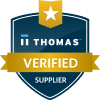Your high-temperature industrial equipment faces constant stress from heat and oxidation. Thermally-grown oxide (TGO) creates a protective layer between thermal barrier coatings (specialized heat-resistant materials) and metal surfaces, defending your components from damage. This natural oxide layer fights corrosion and extends the life of your coated equipment.
Understanding TGO Formation
To protect your equipment effectively, you need to understand how TGO develops. When your metal surfaces reach high temperatures, oxygen molecules react with the base metal (also called the substrate) to create an oxide layer. This natural process produces TGO – a thin, dense protective barrier. The layer grows thicker with continued heat exposure.
The growth rate depends on temperature, oxygen concentration and the metal composition. Metal alloys containing aluminum or chromium create stronger protective TGO layers compared to other materials.
The Role of TGO in Thermal Barrier Systems
Protection Against Oxidation
TGO defends your metal components from further oxidation damage. The oxide layer blocks oxygen from reaching the underlying metal, which slows deterioration and maintains your equipment’s structural integrity. This protection becomes essential when your components operate at high temperatures for extended periods.
Thermal Protection
The oxide layer boosts your thermal insulation system’s performance. Though only micrometers thick, TGO adds significant protection to your thermal barrier coating system. This layer maintains the temperature difference between hot gases and your metal components in demanding conditions.
Adhesion Support
TGO improves how well thermal barrier coatings stick to your metal components through both physical and chemical bonding. This stronger adhesion stops coatings from peeling away (delamination) during temperature changes and extends your protective system’s service life.
Challenges in TGO Management
Growth Rate Control
Your TGO layer needs precise monitoring and control. Fast or uneven oxide growth creates stress within your coating system, leading to potential failures. Proper temperature control and coating selection regulate these growth patterns.
Temperature Effects
Changes in temperature impact how TGO forms and performs. Sudden temperature shifts create stress that can damage the oxide layer and compromise your coating system. Monitoring heating and cooling cycles preserves your TGO layer’s protective qualities.
Material Compatibility
Different metals form different types of oxide layers, each with unique protective properties. You’ll need the right coating system for your specific metal to maximize protection and performance.
Industrial Applications
Aerospace Components
Your aircraft engine components benefit from controlled TGO formation. The oxide layer protects turbine blades and other hot components from heat damage, increasing time between services and improving reliability. Modern aerospace designs account for TGO behavior in material selection.
Power Generation
Your gas turbines rely on TGO as part of their protection system. The oxide layer keeps components intact under extreme conditions, supporting steady power generation and reducing maintenance needs.
Manufacturing Equipment
Your high-temperature manufacturing processes naturally create TGO on equipment surfaces. Understanding and managing this oxide formation maintains your equipment’s performance and longevity.
Maximizing TGO Benefits with ThermaCote®
Your equipment deserves superior protection. ThermaCote’s ceramic-based weather barrier coating works alongside natural oxide formation to shield your components. Our coating system adds protection against temperature extremes while supporting proper oxide development.
Contact our team to discover how ThermaCote® can protect your high-temperature equipment and structures.
Frequently Asked Questions
How long does it take for TGO to form?
Your TGO layer starts forming as soon as heat is applied, but development rates vary based on conditions. The process typically takes between several hours and a few days to reach the right thickness.
Can TGO formation be prevented?
You can’t completely prevent TGO in high-temperature environments, but you can control it through coating selection and application methods.
Does TGO affect coating performance?
A properly managed TGO layer improves your coating system’s performance. However, excessive or uneven growth can damage your protective coating.
What temperatures trigger TGO formation?
Your equipment starts developing TGO at temperatures above 600°C (1,112°F), with exact temperatures varying based on metal composition.
How thick is a typical TGO layer?
TGO typically measures 1-10 micrometers – about 1/50th the thickness of a human hair. The exact thickness depends on heat exposure time, temperature, and operating conditions.

